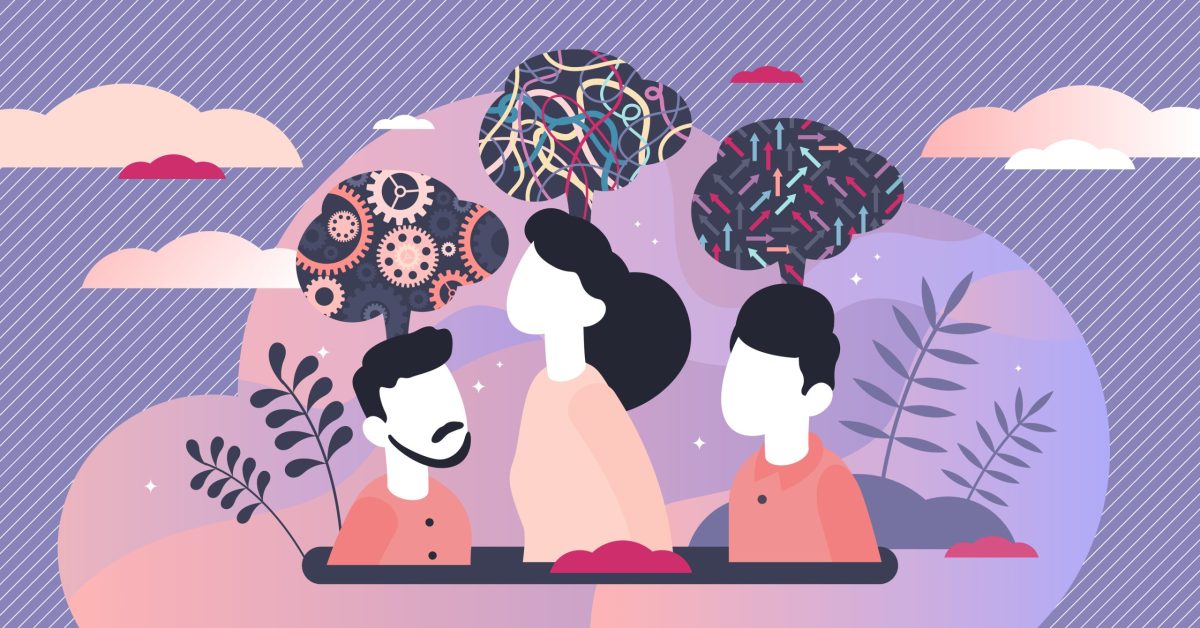Why Some People Can’t Visualize Images and May Dream in Words
Posted on Categories Discover Magazine

Imagine an apple. Do you see boxes full of colorful apples on display at a market? Or an orchard full of apples, some strewn around the ground? For some people, it’s easy to come up with these images. But for others with the neurological condition called aphantasia, they simply cannot produce an image of the apple in their mind at all.
Aphantasia is a different mechanism and strategy of dealing with everyday tasks, as Joel Pearson, professor of cognitive neuroscience, and founder and director of the Future Minds Lab at the University of New South Wales in Australia, says.
You can liken it maybe to solving a simple math calculation: Nearly everybody goes about it in a different way, but in the end the result is the same. What is certain, is that aphantasia is not an illness, nor a disease and it does not need to be cured.
What Is Aphantasia?
The term phantasia was first coined by Greek philosopher and polymath Aristotle around 350 B.C. to describe the mind’s eye and it simply means imagination. Nearly 2,000 years later, Adam Zeman, professor of cognitive and behavioral neurology at the University of Exeter in the U.K. coined the term aphantasia in 2015, which is now a recognized neurological condition.
Zeman first came across a patient who had lost his ability to visualize in 2003 and started studying the case. He soon recognized that when people visualized something in their mind, a specific region of the brain lit up. But in the case of this patient, it did not.
First describing the condition as “blind imagination,” Zeman was contacted by others who told him that they had never been able to visualize things in their mind. Further study continued, but even with Zeman’s breakthrough study of “Lives without imagery – congenital aphantasia,” there is much more to learn.
Read more: What Happens if the Prefrontal Cortex Is Damaged?
How Many People Have Aphantasia?
About 3 to 4 percent of the population has aphantasia, but they often do not even realize they have the condition. The actual number of people living with aphantasia therefore might be a lot higher than first thought.
Water engineer Ian James did not realize that he had aphantasia until he was in his mid-50’s, never knowing that his mind worked differently from those around him. Just like the “apple test,” he knows what an apple looks like, but ask him to visualize the apple, and he gets stuck.
“On a TV game show the other day, the question was what the color of the logo of a well-known brand of spicy sauce was. I could answer the question, because I know the brand, but my wife told me, she practically went to the supermarket in her mind, saw the bottles on the shelf and then got the answer. I simply cannot imagine what that is like,” says James.
Many researchers have found that on average, those affected may work in the math or engineering fields, such as James. There are also plenty of creatives known with the condition, such as Ed Catmull, co-founder of Pixar and former president of Walt Disney Animation Studios.
“Aphantasia has never affected my work, but I have, long before I knew I had the condition, always wondered how people thought without words. I questioned how small children formed thoughts without being able to talk. Now I understand it,” says James.
Read more: Your Native Language May Wire the Brain in Unique Ways
Can People with Aphantasia Dream?
Even within diagnosed aphantasia, there are vast differences, such as the ability to dream. Many people with aphantasia only dream in words, but others dream vividly and with real-life images. This is because dreaming utilizes a different part of the brain, which aphantasia may or may not affect.
People with the condition often find it difficult to recall their childhood or vacations, since they can’t access visual memories. They are also sometimes less sensitive to scary outside influences, such as horror movies. This is because the fearsome images might not turn up again in their dreams.
Read more: Do All Dreams Have Meaning?
Testing for Aphantasia
With the mind’s eye, there is no one-fits-all approach to testing. Vivid imagery ranges from none, to experiencing the thought in real life.
For initial tests, the Vividness of Visual Imagery Questionary, created in 1973 by British psychologist David Marks, is still in use today. Even with increasing awareness of aphantasia, there is relatively not a lot of research on the condition, and much more work needs to be done.
So, what does the apple in your mind look like? Is it formed by words or pictures?
Read more: Reading The Mind With Machines